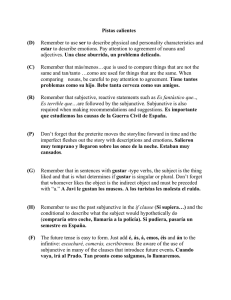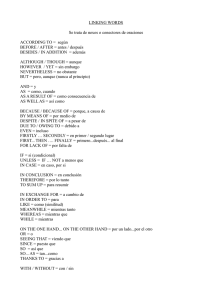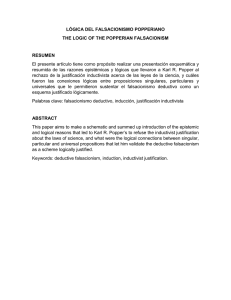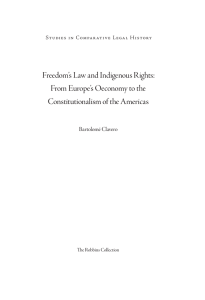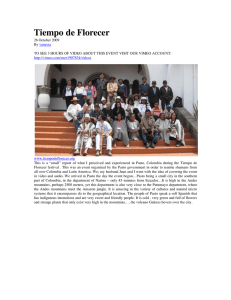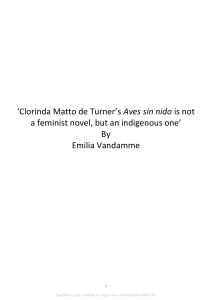49-kritik-gesamt-4 323-371 - Max-Planck
Anuncio
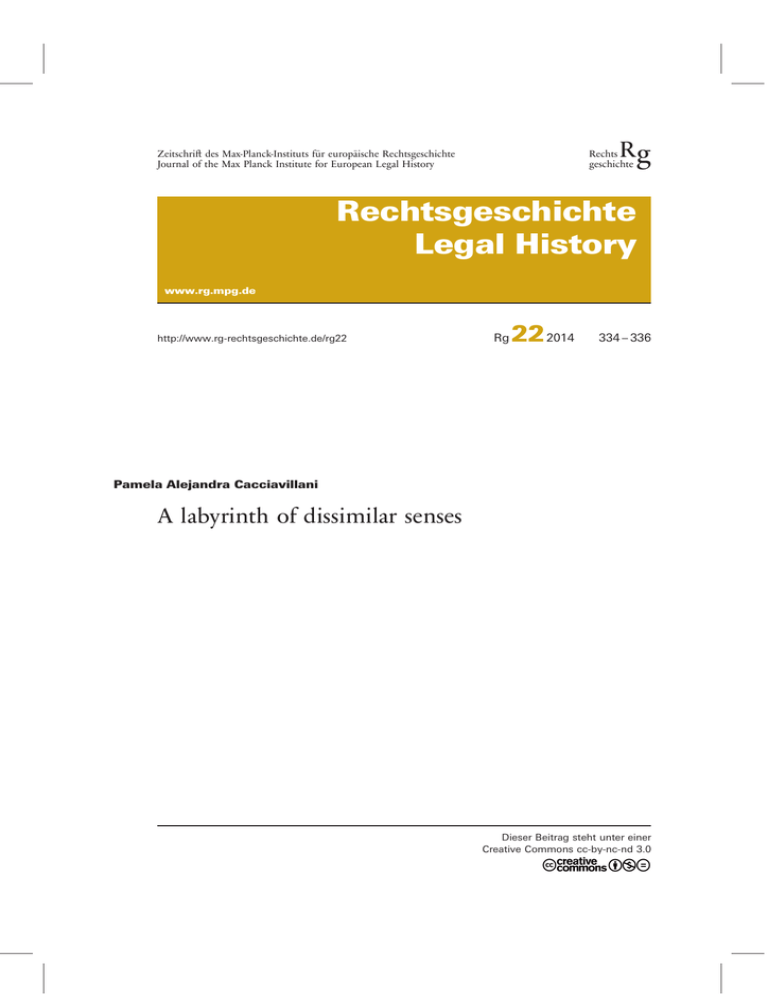
Rg Rechts geschichte Zeitschri des Max-Planck-Instituts für europäische Rechtsgeschichte Journal of the Max Planck Institute for European Legal History Rechtsgeschichte Legal History www.rg.mpg.de http://www.rg-rechtsgeschichte.de/rg22 Rg 22 2014 334 – 336 Pamela Alejandra Cacciavillani A labyrinth of dissimilar senses Dieser Beitrag steht unter einer Creative Commons cc-by-nc-nd 3.0 Rg 22 2014 Pamela Alejandra Cacciavillani A labyrinth of dissimilar senses* A labyrinth is an intentionally complex place having a special purpose: to confuse all those who want to enter it. An identical purpose was discovered by the author in the last constitutional reform in Mexico. Much like Dedalo revealed to Ariadna the secret of the labyrinth of Crete, Melgarito Rocha attempts to reveal the secret of this reform. The study of an indigenous constitutional reform in contemporaneous times calls for a new form of analysis which has to go beyond the legal monism conception. Alma Guadalupe Melgarito Rocha, the author of the acclaimed Legal Pluralism: The Hidden Reality, considers that nowadays a critical attitude towards the legal system is necessary when it comes to understanding how different normative orders can coexist in a common territory. As the author well observes, despite the need for a review of the law, the steps forward have been scarce. This is one of the reasons why the work developed in this book is so significant, but perhaps the most relevant aspect of this research is the author’s approach. Melgarito Rocha’s research on indigenous constitutional reform in Mexico in 2001 poses a legal discourse analysis from one multidisciplinary perspective by means of a thorough study of the second constitutional article connotations. For this reason, the author works from critical legal thinking, language philosophy and semiotic. The book is structured in two parts. The first part, called »Planteamiento Teórico. La crítica jurídica como análisis del discurso«, has two chapters and addresses legal critical thinking from a theoretical standpoint. Chapter one traces several currents of legal critical studies and then shares the author’s conception about them. Specifically, Alma Melgar- * A G M R, Pluralismo Jurídico. Análisis crítico-semiológico de la relación estado – pueblos indígenas (Derecho y Sociedad), Mexico, D. F.: Universidad Nacional Autónoma de México, Centro de Investigaciones Interdisciplinarias en Ciencias y Humanidades 2012, XV, 146 p., ISBN 978-607-02-3505-4 334 A labyrinth of dissimilar senses ito asserts that it is not possible to understand critical currents under a common title. Nevertheless, she has found a connection between these currents and their ability to unveil what is under normative structure. Beyond this connection common to different currents, the author adheres to the newest guidelines regarding the trends of the Alternative Law in a strict sense. From this perspective, it has been advocated the defense of systems that coexist with modern systems in the same territory. Legal Review Epistemological Approaches, Legal Review inspired on Neo Marxism, and Legal Semiology, are the result of the influence of authors such as Antonio Carlos Wolkmer, Oscar Correas, among others. Second chapter lays the methodological and epistemological basis. Melgarito Rocha first defines science. She depicts it as a kind of discourse which works with an empirical method and it is more prestigious than non scientific knowledge. In her view, law is a prescriptive discourse. Therefore, the role of legal science is to analyze the linguistic form of the norms. In this sense, she makes a special emphasis on the importance of addressing »normative discourse« with an empirical method. This chapter continues with the treatment of certain theoretical concepts which are considered essential by the author. One of these concepts is Language. In the author’s view, language is a communicative tool but it also bears a special relationship with the ideology. She states that language is able to transmit, reproduce and legitimize ideology. According to Jurij Lotman, another special feature of Language is the ability to create models. In this sense, Melgarito Rocha regards language as the first Kritik »standardizing system of the world«. Legal language is also a »standardizing system« since it works with deontic operators. The book delves into the question: What is the Law? Melgarito Rocha concludes that it is a discourse aimed at modifying the individual’s behavior by means of threat. She explains that the production of the Law is to be done by qualified officers, who have to serve according to a procedure and in an authorized sense. Here, we can see the difference between modern law and the community law. In the latter, we witness another form of violence, non physical, which has made it possible for the continuity of community life. In these non capitalist societies there is not a qualified group which produces the law because its genesis lies in the community. In reference to legal text, Melgarito Rocha observes that there are norms and other kind of statements which do not order behavior: they establish meanings. They are essential in that they serve as ideological foundation of legal texts and, hence, contribute to the social acceptance of the legal discourse as obligatory ruling and eventually to the reproduction of the legal system. The author then digs into the concept of normative system. Alma Melgarito addresses the Theory of Law which explains the idea of systematization based on validity. From Kelsen’s point of view, the concept of hypothetical norm enables the identification of a legal system. This represents the idea of acknowledgment of legal orders which is essential because they need to be accepted as obligatory. In this point, Oscar Correas’s critical legal thinking is useful because it shows how different legal systems can regulate one sole territory. The last section of this chapter depicts various theoretical notions which, according to the author, are mandatory if we are to analyze indigenous legal discourse. Melgarito Rocha illustrates the paradigm of legal monism by means of two characteristics: on the one hand, a State with power over a specific territory and, on the other hand, the monopoly of legal production. These concepts are not present in indigenous communities. Therefore, it is of vital importance to study these communities from a standpoint that considers the idea of coexistence of different legal orders in one territory. To address these two factors, the author presents Legal Pluralism as the most adequate way to do it. Finally, the idea of alternative normative is stated because it enables the separation of other laws critique from the Mexican one. In addition to this explanation she remarks that the relationship between these two legal systems calls for pacts among equals. The second part of the book, called »Crítica jurídica como análisis del discurso. La reforma de 2001 al artículo segundo constitucional en materia indígena«, comprises two chapters; the first of them describes the hypothesis of Melgarito Rocha’s research: in the second article of Mexican constitution there is a labyrinth of dissimilar senses which can only be untangled by means of semiologic analysis. The author illustrates briefly on the context in which the constitution was passed, particularly as far as indigenous subjects are concerned. In her view, the reform consisted of general principles and rights with the sole purpose of imposing only one voice for both nation and indigenous communities. At the same time, the author infers a relation of domination from the Mexican state towards indigenous communities. She concludes that this statement of rights masks liberal ideology, and it is a strategy to spread capitalist law. In the last chapter the author analyzes the ideological senses which are communicated from the second constitutional article. Before turning to this assignment the author suggests two categories of legal pluralism »trans capitalist« and »legal pluralism for global governance« as the appropriate theoretical approach to understand the position of indigenous law systems versus systems of capitalist societies. By analyzing the text in question, the author recognizes a relationship among the following semiologic systems, the legal monism, the daily life and the one related to the state and indigenous communities. Domination of the State towards the indigenous communities is the common factor among them. The peculiarity is that this ideology of domination is connoted. In this way, it becomes necessary to go beyond the denotative semiotic of inclusion latent in the Mexican nation as being unique and indivisible to observe that this connotes the domination of the communities. The text reflects on an innovative point of view inspired from Marxism, anarchism and even psychoanalysis. The aim of the research is to be a theoretical and practice tool to analyze indigenous normative reforms. Accordingly, we can use this point of view to study other cases in Latin America. The book has various positive traits, but it also has its down side too. Specifically, when the author explained the context of Mexican reform she omit- Pamela Alejandra Cacciavillani 335 Rg 22 2014 ted the continental context »The new Latin American constitutionalism«. Additionally, the research leaves aside the study of some constitutional articles that directly or indirectly have a connection with the indigenous matter. Last but not least, the author highlights the limitations of this reform but ignores its positive aspects. The book is recommendable for those who want to question the ideological sense of legal text which regulates indigenous or another minority group from a plural standpoint. Nevertheless, the theoretical analysis can be obvious for readers who have legal previous knowledge. n Roberto Gargarella Explicando el constitucionalismo latinoamericano* Por qué es que países con historias y trayectorias políticas similares, situados en la misma región, y a veces en épocas similares, llegan a promover reformas constitucionales tan diversas? Qué explica las similitudes y las diferencias que encontramos, dentro de la historia latinoamericana, en materia de creación constitucional? En Making Constitutions. Presidents, Parties and Institutional Choice in Latin America, el investigador argentino Gabriel Negretto ofrece un estudio comparativo capaz de explicar los orígenes de diseños constitucionales particulares, y por lo mismo, diseños institucionales que en ocasiones se parecen tanto, y en otras terminan resultando tan diversos. Su estudio se apoya en datos provenientes de la historia latinoamericana, desde el año 1900 y hasta la actualidad. Las herramientas que utiliza el autor para fundamentar sus conclusiones son diversas, incluyendo el análisis comparado, la historia, y una amplia base de datos colectada durante años. Según nos dice el autor, algunas teorías del cambio institucional – provenientes sobre todo del campo económico y agrupadas en el libro como teorías cooperativas – sugieren que los reformadores tienden a perseguir objetivos cooperativos, cuando dan inicio a un proceso de cambio constitucional. Mientras tanto, otras teorías – más comunes en la ciencia política, conocidas como teorías distributivas * N, G L., Making Constitutions. Presidents, Parties, and Institutional Choice in Latin America, Cambridge: Cambridge University Press 2013, XII, 283 p., ISBN 978-1-107-02652-0 336 Explicando el constitucionalismo latinoamericano – consideran que los reformistas se encuentran motivados fundamental o exclusivamente a favorecer cambios que contribuyan al objetivo de ganar elecciones e influencia sobre el diseño de políticas públicas. Confrontando a tales aproximaciones unidimensionales, Negretto propone una teoría sobre la elección constitucional de dos niveles. El autor parte de la naturaleza dual de las Constituciones, que incluye estructuras cooperativas y de poder. Dicho marco institucional – agrega – provee de incentivos para que se desarrollen iniciativas dirigidas tanto a asegurar la mayor eficiencia de la Constitución, como reformas sesgadas a favor del partido más poderoso. Según Negretto, dentro de dicho esquema complejo (que sirve tanto como mecanismo de coordinación como de mecanismo distributivo), una lógica dual de elección y diseño constitucional parece resultar más plausible como fuente explicativa de los cambios que se introducen en el texto. Así, frente a un proceso reformista, la elección de un particular diseño institucional estaría marcada tanto por consideraciones de eficiencia, como por pretensiones más directamente partidistas. La existencia de motivaciones de dos tipos muy diferentes – agrega el autor – no necesita terminar con la producción de textos constitucionales contradictorios, ya que ellas pueden – y suelen –

